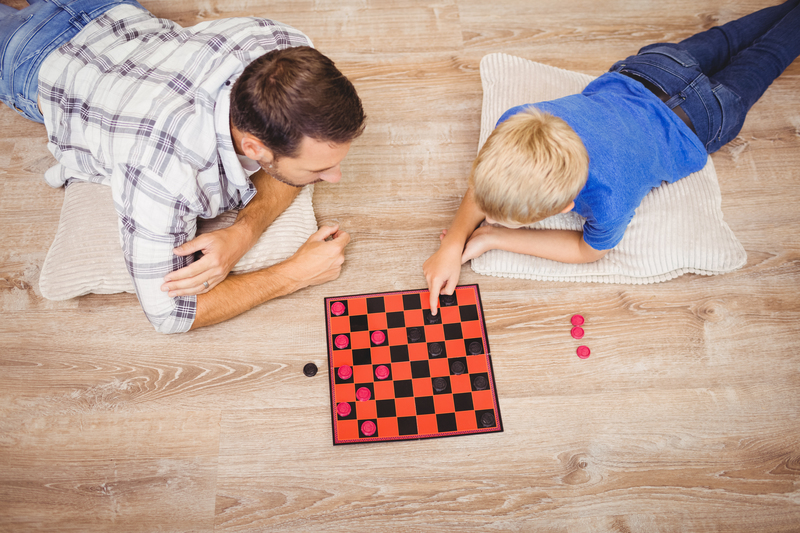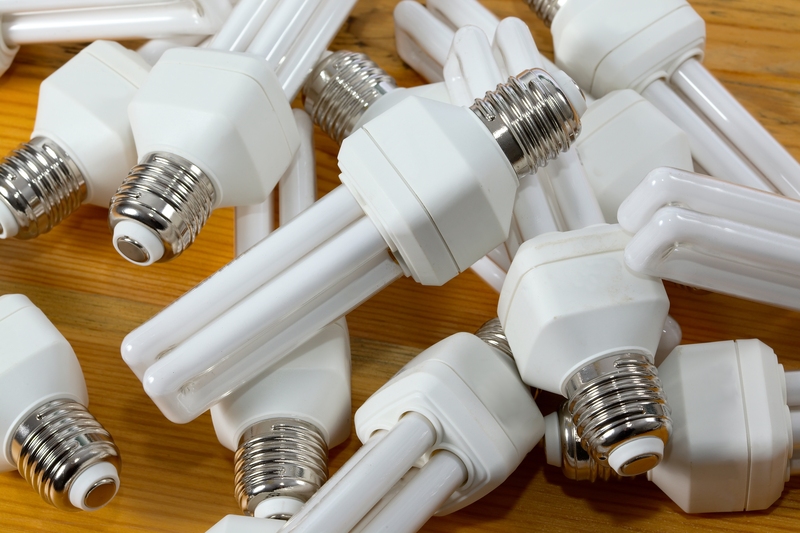Creative Ways to Reuse or Dispose of Pots and Pans
Whether you're an avid home chef or only cook occasionally, pots and pans eventually wear out, warp, or become unusable. Tossing them straight into the trash can be wasteful and harmful to the environment. Fortunately, there are innovative ways to reuse or dispose of old cookware that benefit your home, your creativity, and the planet. In this comprehensive guide, we'll explore creative ideas to repurpose, recycle, or ethically dispose of old pots and pans, ensuring you handle your unwanted kitchen tools responsibly.
Why Not Just Throw Old Pots and Pans Away?
Discarding old or damaged cookware in the garbage sends more waste to landfills and contributes to environmental problems. Many pots and pans are made from metal alloys, nonstick coatings, and mixed materials that don't break down naturally. By finding smart ways to reuse or responsibly dispose of your pots and pans, you can minimize waste and even create useful or decorative items for your home.

Assessing the Condition: Can Your Pots and Pans Be Saved?
Before you part ways with your existing cookware, take a moment to inspect them:
- Light scratches or stains? A deep clean or proper seasoning may restore their functionality.
- Warped or severely dented? These are more likely candidates for creative reuse or recycling.
- Flaking nonstick coating? These items should never be cooked with, but are still ripe for repurposing.
- Bare cast iron rusty? With some effort, you can often revive it!
Repurposing Old Pots and Pans with Style
If your pans are no longer suitable for cooking, that doesn't mean they can't live on with a new purpose. Check out these ingenious ways to upcycle old pots and pans for home and garden:
1. Unique Planters and Garden Features
- Turn them into planters: Poke some drainage holes in the bottom, add soil, and use them as quirky garden containers. Old colanders, especially, allow for good drainage and make excellent herb pots.
- Use them as garden edging: Line up small saucepans upside-down for whimsical borders around flower beds or walkways.
- Create a fairy garden: Old frying pans can become the perfect shallow base for a miniature fairy village.
2. Home Decor and Organization
- Chic wall art: Attach decorative handles to the lids and hang them on your kitchen wall for a rustic touch. Grouping colorful or unusual pans can create a dynamic display.
- Homemade chalkboard: Paint the base of an old pan with chalkboard paint for a magnetic message board for your kitchen.
- Creative organizers: Mount saucepans or skillet bases on the wall to store kitchen utensils, fruit, or towels.
3. Functional Household Items
- Make a clock: Transform a frying pan into a clock face by adding a clock mechanism through the center.
- Bake up bird feeders: Hang a saucepan by its handle from a tree and fill it with seeds to attract local birds.
- Pet food bowls: Old but clean pots and pans can be repurposed as pet food or water bowls, especially for outside animals.
4. Festive Crafts and Gifts
- Holiday decorations: Paint and decorate old pans for use as whimsical holiday wreaths or centerpieces.
- Candle making: Shallow pans can be filled with soy wax and wicks to create large, rustic candles for your home or gifts.
Recycling Pots and Pans: What You Need to Know
Not all cookware is safe or practical to reuse around the home. If you'd prefer to move them out of your space entirely, recycling is a responsible option. Here's how to recycle old cookware and dispose of them sustainably:
What Types of Pots and Pans Are Recyclable?
- Stainless Steel Cookware: Most recycling centers accept these, but remove any plastic handles or lids.
- Aluminum Pans: Easily recyclable; again, separate non-metal components if possible.
- Cast Iron: Valuable for scrap metal dealers and may also be restored by enthusiasts.
- Copper Cookware: Highly sought-after by scrap dealers for its metal content.
Nonstick (Teflon-coated) cookware is typically not accepted by most curbside recycling programs, due to chemical coatings. Local scrap yards may take these, but call ahead to confirm.
How to Recycle Old Pots and Pans Step-By-Step
- Contact your local recycling facility. Ask which types of metal cookware they accept and what condition it must be in.
- Prepare your cookware. Remove non-metal handles and lids, and clean off food residue.
- Drop off or schedule pickup. Some cities offer bulk waste collection, or you may need to bring your items to a special facility.
Eco-Friendly Disposal Options Beyond Recycling
If your local recycling center doesn't accept your particular cookware, consider these alternatives before placing them in the trash:
- Donate usable cookware to thrift stores, shelters, community centers, or food banks. Even if they aren't perfect, many organizations can make use of extra kitchen supplies.
- Check for take-back programs: Some retailers and brands, like IKEA or certain cookware companies, offer recycling or trade-in programs when you purchase new items.
- Upcycling community platforms: List your old pots and pans on websites such as Freecycle, Craigslist, or Facebook Marketplace. Crafty individuals often seek out old cookware for their own projects.
Creative Projects for Kids with Old Pots and Pans
When involving children in creative reuse, safety always comes first. Make sure there are no sharp, broken, or flaking parts. Here are some engaging, kid-friendly activities:
- Make a musical band: Create a backyard percussion set with different-sized pots, pans, and utensils. Let kids explore rhythm and sound in a safe environment.
- Build a fairy or dinosaur garden: Fill shallow pans with pebbles, dirt, and small plants. Let kids add toys and figures for a whimsical, interactive scene.
- Pots as paint palettes: Use old pans as giant paint organizers for messy art projects.
Repairs: Give Your Old Pots and Pans New Life
Sometimes a pot or pan just needs a little TLC to function well again. If you're attached to an otherwise good-quality piece, consider these fixes:
- Re-seasoning cast iron: If it's just rusty, you can scrub it clean, dry it thoroughly, and bake on a thin coat of oil for a renewed nonstick surface.
- Tightening handles: Many saucepan handles can be re-screwed or replaced if they're the only issue.
- Professional re-coating: Some companies offer to strip and refinish favorite metal cookware, depending on its value to you.
What About Ceramic or Glass Pots and Pans?
Ceramic and glass cookware often cannot be recycled with household glass because of the way they're manufactured. Here are your options:
- Repurpose chipped ceramics: Broken pieces can be used in garden mosaics or as drainage material in plant pots.
- Check for specialized glass recycling: Some recycling centers or community events collect Pyrex and other cookware glass for specialty processing.
- Donate in good condition: Thrift stores welcome glass and ceramic bakeware if intact and clean.
Environmental Impact: Why Responsible Disposal Matters
Careless disposal of kitchenware may seem like a small thing, but as millions of households upgrade their cookware, the cumulative effect is significant. Metal pots and pans can take centuries to decompose, and nonstick coatings may leach chemicals. Reusing, rehoming, or recycling helps conserve natural resources, reduce landfill waste, and lower your environmental footprint.

Frequently Asked Questions About Reusing or Disposing of Pots and Pans
-
Can I recycle nonstick cookware?
Nonstick pans are rarely accepted at curbside recycling; check with scrap metal recyclers; remove as much coating as possible if required. -
Are cast iron pans worth restoring?
Absolutely. Cast iron is easy to re-season and can last decades with proper care. -
How do I safely dispose of pots with plastic handles?
Separate the metal from the non-recyclable parts; recycle the metal and dispose of plastic in accordance with local waste rules. -
Is it safe to use an old chipped ceramic pot for cooking?
No. Cracks or chips can harbor bacteria and may cause breakage during use. Reuse these for decorative or gardening purposes instead.
Conclusion: Every Pot Deserves a Purpose
There are countless creative ways to reuse, recycle, or responsibly dispose of your old pots and pans. By thinking beyond the trash bin, you can extend the life of your cookware, spark your creativity, and help protect the environment. Whether you transform a battered pan into a playful planter, a unique clock, or ensure it's properly recycled, your small actions have a big impact. Look at your old cookware as an opportunity--for artistry, sustainability, and community good.
Ready to give your pots and pans a second life? Explore these ideas, share your creations, and inspire others to see the hidden value in their kitchen cast-offs!